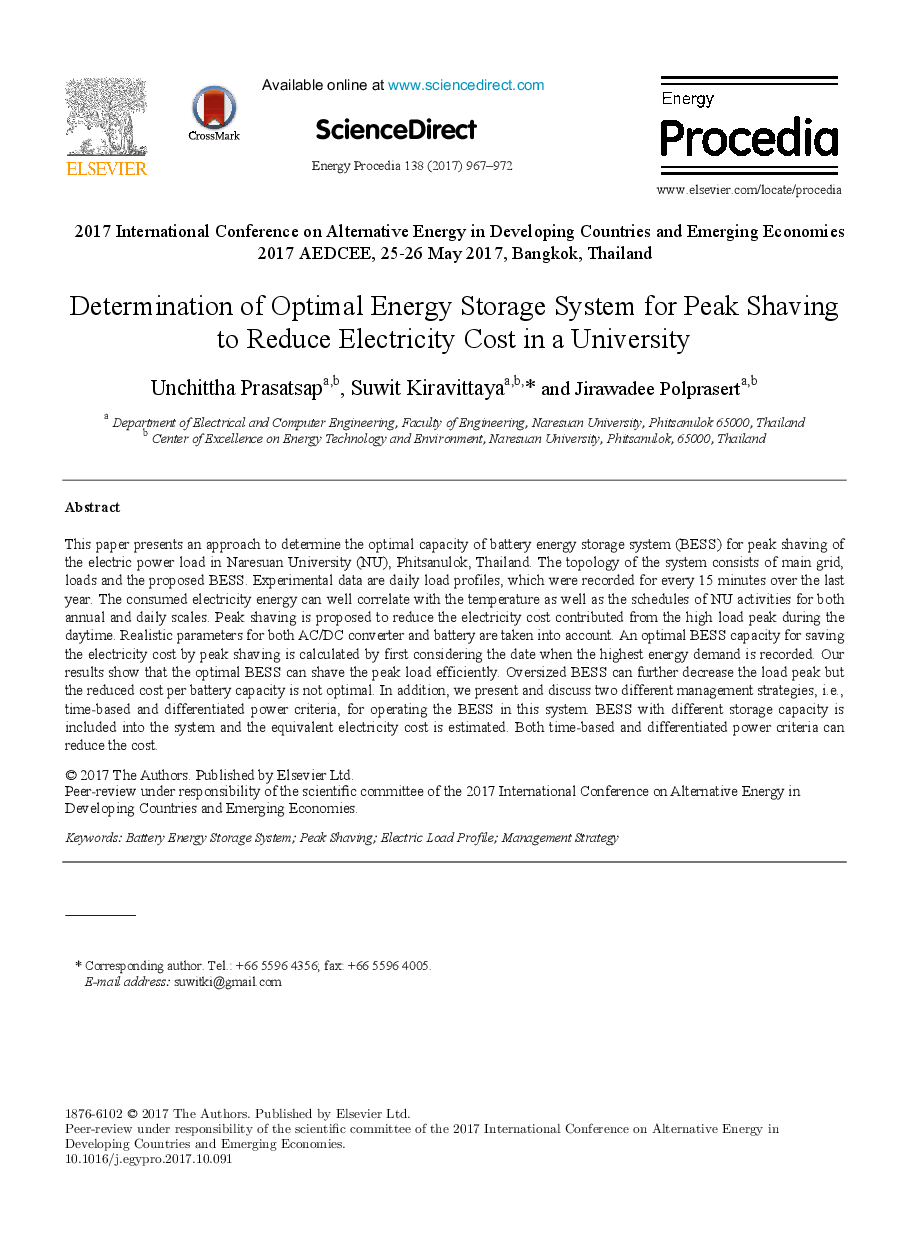ترجمه فارسی عنوان مقاله
تعیین سیستم ذخیره سازی بهینه انرژی برای کاهش فشار برق در دانشگاه
عنوان انگلیسی
Determination of Optimal Energy Storage System for Peak Shaving to Reduce Electricity Cost in a University
| کد مقاله | سال انتشار | تعداد صفحات مقاله انگلیسی |
|---|---|---|
| 85520 | 2017 | 6 صفحه PDF |
منبع

Publisher : Elsevier - Science Direct (الزویر - ساینس دایرکت)
Journal : Energy Procedia, Volume 138, October 2017, Pages 967-972
ترجمه کلمات کلیدی
سیستم ذخیره انرژی باتری، تراش صاعقه، مشخصات بار الکتریکی استراتژی مدیریت،
کلمات کلیدی انگلیسی
Battery Energy Storage System; Peak Shaving; Electric Load Profile; Management Strategy;

